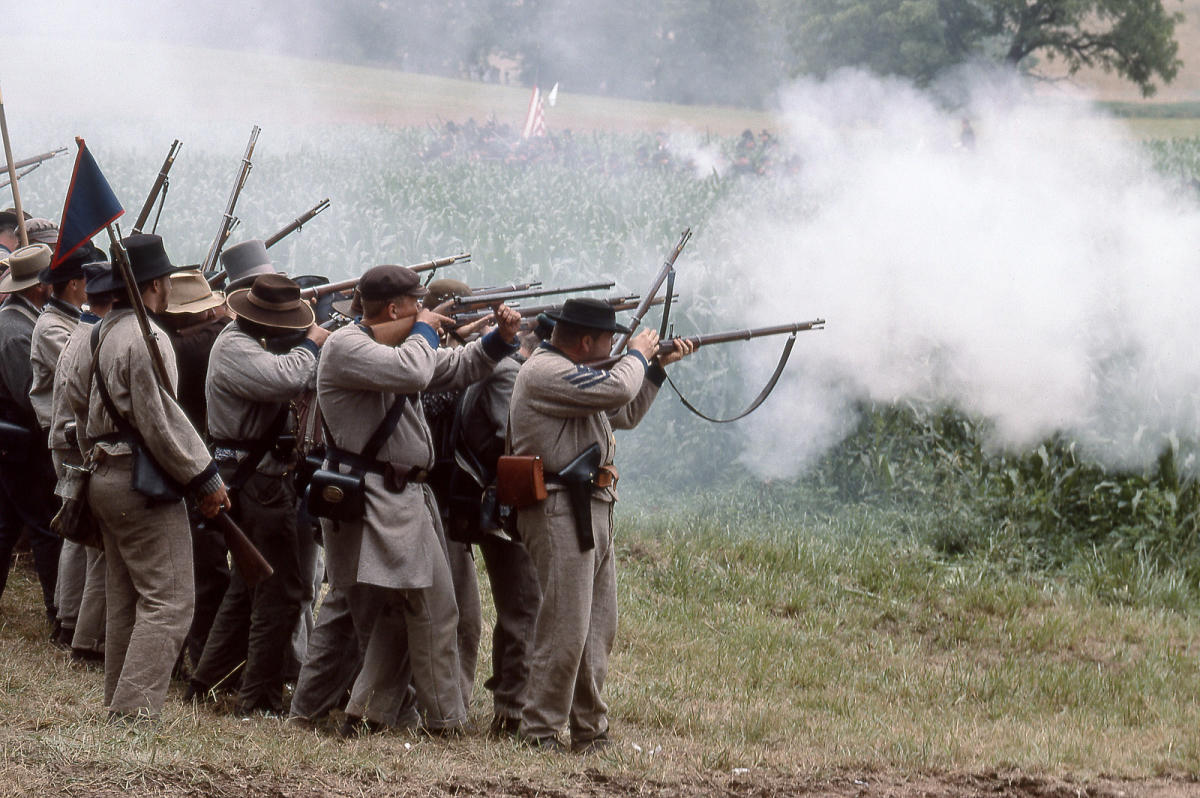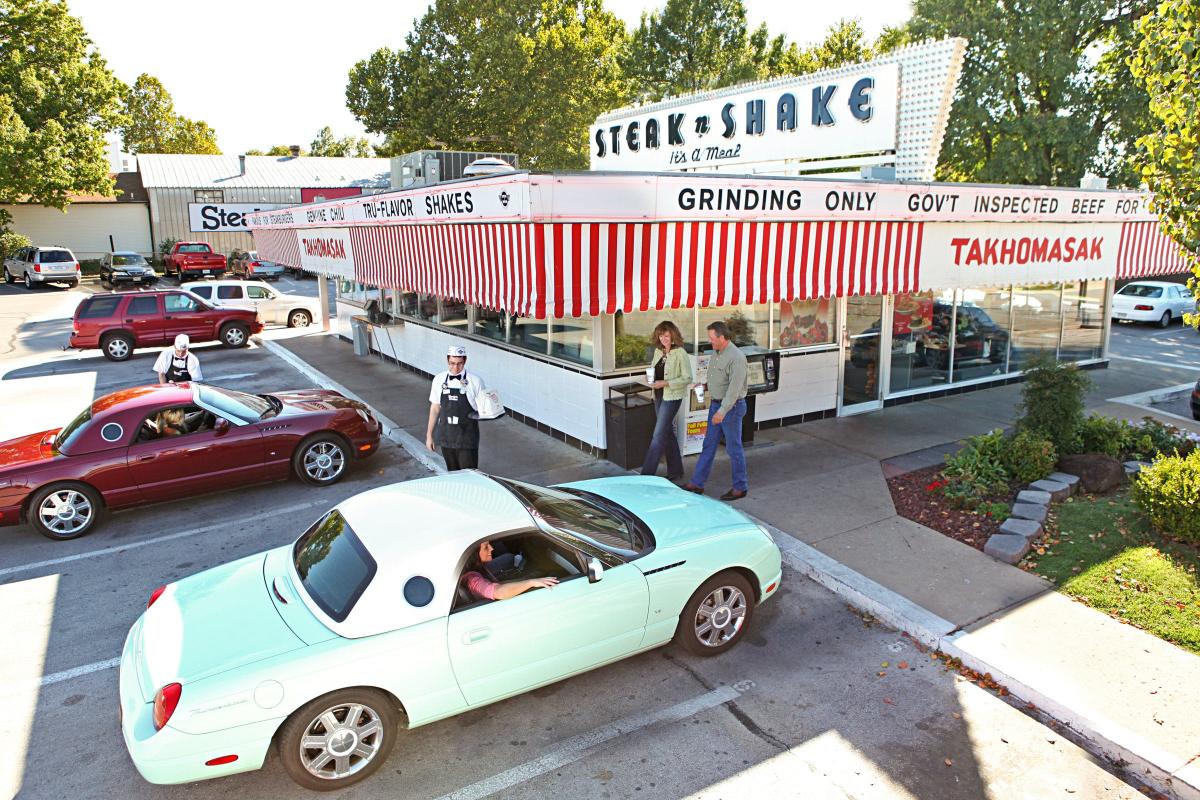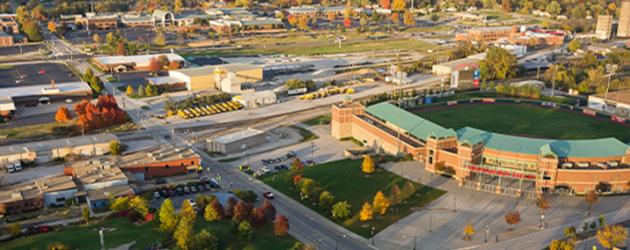Springfield History
Then, Now And In Between.
Springfield’s history began long before the city was established. Prior to white settlement, the area was inhabited by the Osage, Delaware, Kickapoo and other Native American tribes who moved out of the area after white settlement began. In 1818, the first permanent settlement of a white family in southwest Missouri was established and in 1829, John Polk Campbell and his brother carved their initials in an ash tree with the intention of returning to the area to settle, an act considered to be the founding of Springfield. Before the Campbells returned, William Fulbright and his family moved to the area and settled in 1830 at Fulbright Spring, on what is now College Street just off Park Central Square. Soon after, Campbell and others began settling in the area and in 1838, the city was incorporated.
Why the city was named Springfield is unknown. Some speculate it was because of the springs in the area and others think it was named after other cities bearing the same name to the east.
Here are some of the notable events in the city’s history.
Civil War

On August 10, 1861, army units clashed near Wilson's Creek in the first major battle west of the Mississippi River, involving about 5,400 Union troops and 12,000 Confederates. General Nathaniel Lyon was killed, the first Union general to die in combat. The Confederates were victorious. Union troops fell back to Lebanon, then Rolla, and regrouped. When they returned to Springfield, the Confederates had withdrawn. The battle led to increased military activity in Missouri and set the stage for the Battle of Pea Ridge in 1862. The National Park Service designated Wilson's Creek National Battlefield in 1960. The 1,750-acre battlefield stands as one of the most historically pristine battle sites in the country.
For two years following the Battle of Wilson's Creek, possession of the city seesawed. Then in January 1863, Confederate forces advanced toward the town square and the Battle of Springfield began. As evening approached, the Confederates withdrew. The next morning, the Confederates left town and the city stayed under Union control until the end of the war.
Trail of Tears
As Springfield was being settled, other parts of the country were making history that would touch the city. In 1830, President Andrew Jackson signed the Indian Removal Act and Native American tribes were forced to leave their homeland in a series of treks that became known as the Trail of Tears due to the thousands of deaths that occurred during the forced marches. The Trail of Tears took multiple routes across the country, including one that was traveled by seven or eight detachments of about 1,000 people each that went through Springfield. Traces of the trail can still be found in and around Springfield and are marked to honor those who were forced to make the journey.
The Wild West Era
In the wake of the Civil War, Springfield helped give birth to the Wild West era. In July 1865, the town square was the site of the nation's first quick-draw shootout. Following a poker game in the Lyon House, Davis Tutt claimed “Wild Bill” Hickok owed him money and took his pocket watch as collateral. Tutt claimed he would wear it in public to show that Hickok didn't pay his debts. The next day from 75 yards away, Tutt fired a shot at Hickok, barely missing his head. Hickok fired back and killed Tutt with a bullet through the heart. The event made nationwide news. You can find markers in the streets where each man stood during the incident.
Arrival of the Railroad
On April 21, 1870, the St. Louis-San Francisco line rolled through Springfield, establishing a new city, North Springfield, with Commercial Street as its downtown. Commercial and industrial diversification came with the railroads and strengthened the City of Springfield when the two towns merged in 1887.
Birthplace of Route 66

Officially recognized as the birthplace of Route 66, it was in Springfield on April 30, 1926, that officials first proposed the name of the new Chicago-to-Los Angeles highway. In 1938, Route 66 became the first completely paved transcontinental highway in America stretching from the Great Lakes to the Pacific Coast. Explorers coming through Springfield can choose from two original routes: the colorful downtown area, site of the city's square and historic events; or bypass the city on the north side. Traces of the Mother Road are still visible along Kearney Street, Glenstone Avenue, College and St. Louis streets and on Missouri 266 to Halltown.
Young Brothers Massacre
On Jan. 2, 1932, police raided a farm in search of outlaws Harry Young and his brother, Jennings, resulting in what would be known for decades as the worst massacre of law officers in the nation. As officers arrived, a gunfight began and in less than an hour, six of seven officers were killed. The brothers escaped, making their way to Houston, Texas, where three days after the massacre, they shot each other when police moved in to capture them.
The Cobra Scare
In 1953, one of the city’s strangest events occurred. A hooded cobra, a venomous snake not native to North America, was killed near a pet shop downtown and 10 more were killed shortly thereafter. The event made national headlines and the cobra made its way onto the city seal. It wasn’t until 1988 when the source of the snakes was discovered. A man, who was 14 in 1953, revealed he had released the snakes from a crate on the pet shop’s front porch because he was angry with the shop owner over fish that died the day he purchased them.
The Ozark Jubilee
The first national country music show on television was broadcast by ABC from Springfield from 1955 until 1960. The show is credited with popularizing country music and featured well-known performers, including Red Foley, Speedy Haworth, Brenda Lee, Porter Wagoner and Slim Wilson.
While these are things that put Springfield in the news spotlight, there are many others that shaped the city’s culture, industry and landscape into the beautiful city it is today. We invite you to explore the city and enjoy her many assets.













